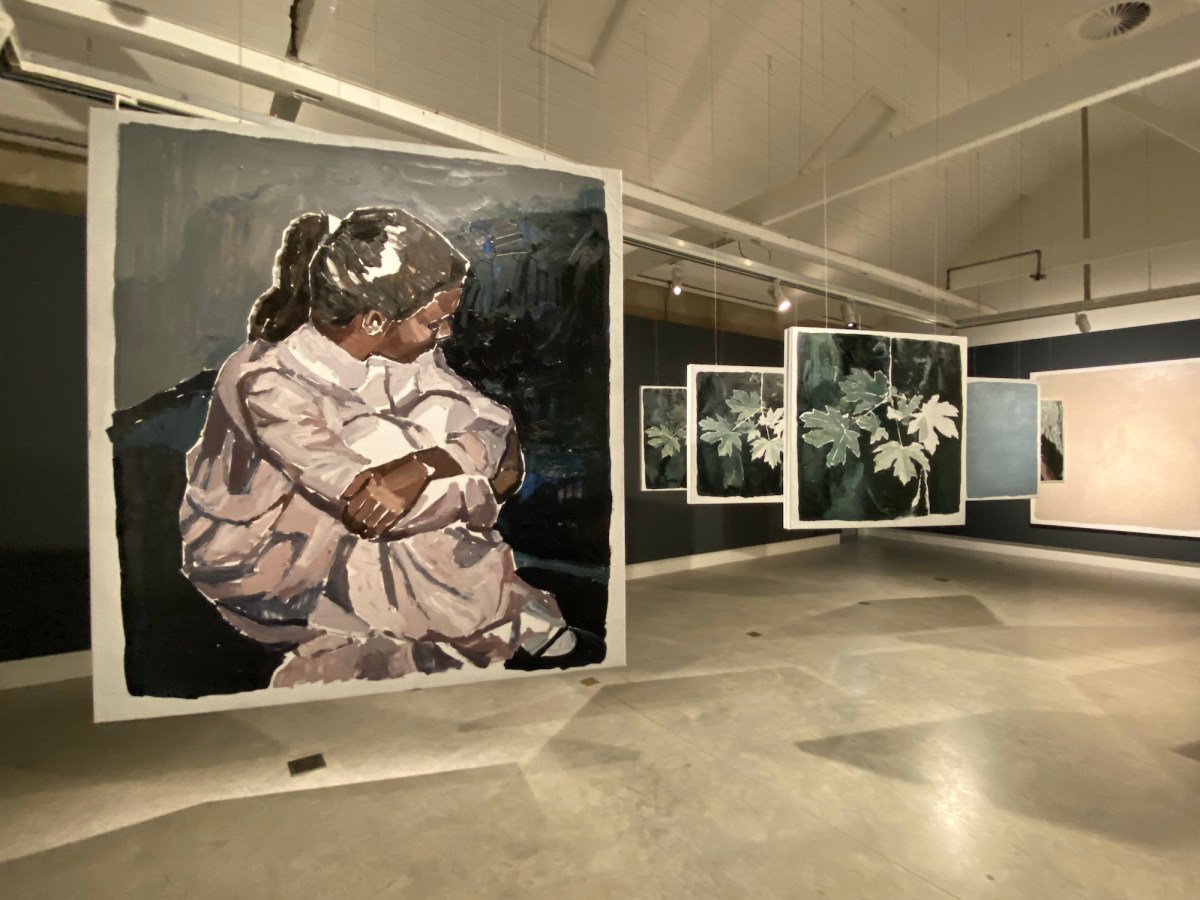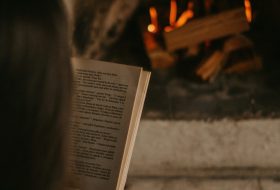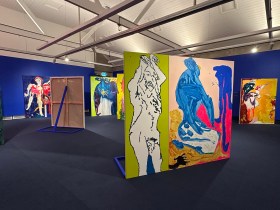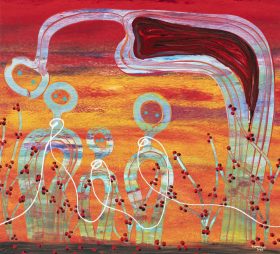Some will know Clara Adolphs’ artworks from the recent Adelaide Biennale, Inner Sanctum, where curator José da Silva presented a sweep of her large paintings at the exhibition’s point of entry.
Da Silva described them as the ‘breakout star of the Adelaide Biennial’ in his opening speech for the exhibition at Ngununggula last weekend, adding, ‘This survey is a testament to your impressive contribution to Australian painting in only the first years of your career.’
Together Again maps the past decade of Adolphs’ painting practice – what we in the art world term a mid-career survey. But at just 39 (b. 1985), Adolphs is really just getting pumping, and the volume of work in this exhibition is testament to her commitment and unwavering, and highly developed, signature.
Getting criticism out of the way, it has to be said the show is extremely over hung. Especially at their scale the works have the ability to hold large walls. I can understand the decision to flesh out the conceptual play of repetition and replication of photography in her work – one has to remember these images emerge from found photographs, which are then painted over and over and over again in the studio. And we see that doubling across this exhibition.
However, it is through that very repetition that a connection is born out of these unknown faces. And, as the title of the exhibition suggests, Together Again evokes a gathering of old friends. As a visitor to this exhibition, that familiarity is transferred again to us. One almost feels like these are images plucked from our own family albums.
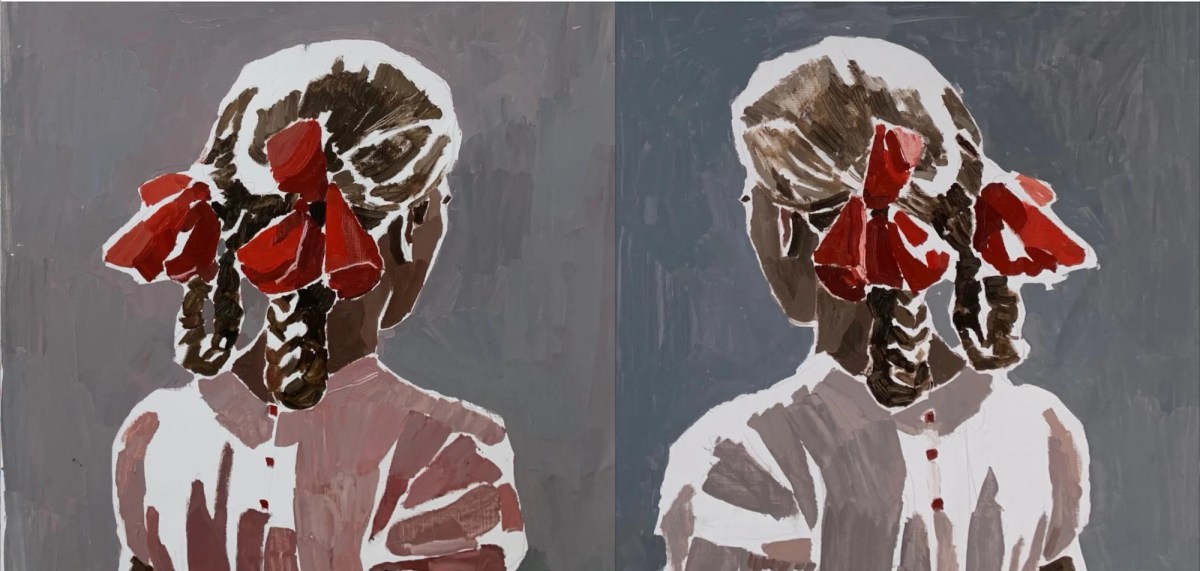
Faces are often dappled with light, sun-cast long shadows through trees or gatherings in sunny fields – as da Silva described: ‘The atmosphere is always unhurried, tender and full of secrets.’
This is a consistency across the exhibition – and indeed her practice. Walking into the first space, visitors face an almost salon-hang intensity of early career works, loaned back by collectors. All the hallmarks of her signature style are here.
The next gallery is weighty with works, but continues firm footed in her own visual language. There is a feeling of leisure here as these unknown faces gather. It feels welcoming, and yet oddly introspective and voyeuristic. These found photos have a universal quality, and it is this human condition that Adolphs paints, not the subject per se.
Where this exhibition gets interesting is the small interim gallery between the two main spaces. Here Adolphs really pushes her practice forward. Eight massive canvases line the small space, floor-to-ceiling and abutted to create an immersive experience. They are drawn from photographs of a fast-moving cloud-scape, taken in a short burst of photographs. The difference here is that Adolphs has taken these images herself.
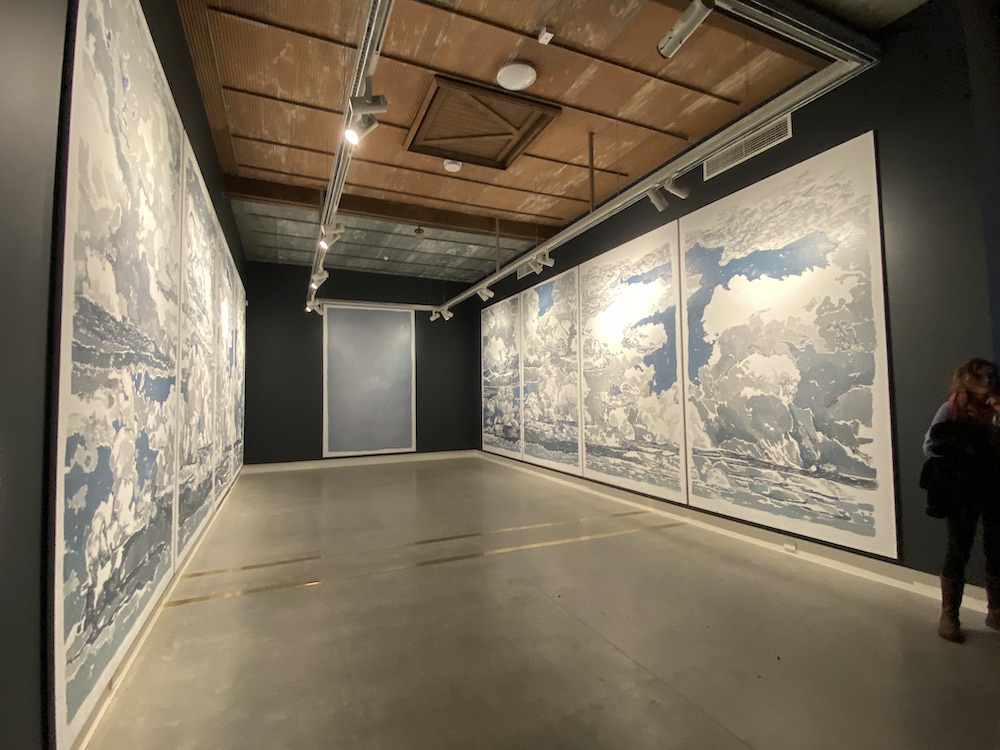
Over the two years that Ngununggula has been open, this has become a bit of a signature space for the gallery, allowing artists to be a little more experimental and lean into the unexpected. Adolphs rises to the challenge, and it is perhaps the highlight of the exhibition.
The series February 13th takes what may have been a snap as inspiration for a background to a very emotive, activated body of works. Adolphs has described them as ‘her most personal works’.
On the end wall is a canvas painted in a single blue. How does it fit? Apparently, the single colour is a kind of “method painting” to evoke a deep personal memory for the artist. We see the technique again in the end gallery, perhaps less successfully there.
That gallery is engorged with stimuli. Massive paintings wrap around the walls, while a kind of aerial flotilla of double-sided paintings hang to one side. That doubling or repetition here is most obvious – and in some ways has become the subject in itself. A pair of almost identical paintings of a team in a boat sit side-by-side, while similar landscapes face off across the room. One needs to realise that all these works are well over three metres in length.
Read: Exhibition review: Materiality…but not as we know it, CMAG
The group of hovering paintings is curious, however. Double-sided, three deep and four along, they are considered as four groups of six paintings (as per the wall labels). One is of a child nursing a doll, the next a cluster of leaves, then a woman lying in the sun, which has been turned on its side, and another blue canvas.
This is a big move on Adolphs’ part, and I am interested to see where she pushes this. The works feel almost petite in contrast to the larger works, and perhaps lack the confidence with that new step.
Scale is a curious thing with painting – it does take a great confidence to push one’s work into meterage. Adolphs pulls it off in individual works, and one of her tactics is to create a white border to the canvas – allowing them space to breathe and to float on the wall. My only disappointment is that I want that space to continue to flow with a more sparse hang.
Overall, this is an ambitious and cohesive exhibition that celebrates the dynamism of painting and its capacity to capture human emotion. Visitors to Together Again will not be disappointed, and are most likely to find their own personal points of connection.
Together Again: Clara Adolphs
13 July – 1 September 2024
Ngununggula, Southern Highlands Regional Gallery
Free.
The exhibition is part of Ngununggula’s 2024 Creative Program.
